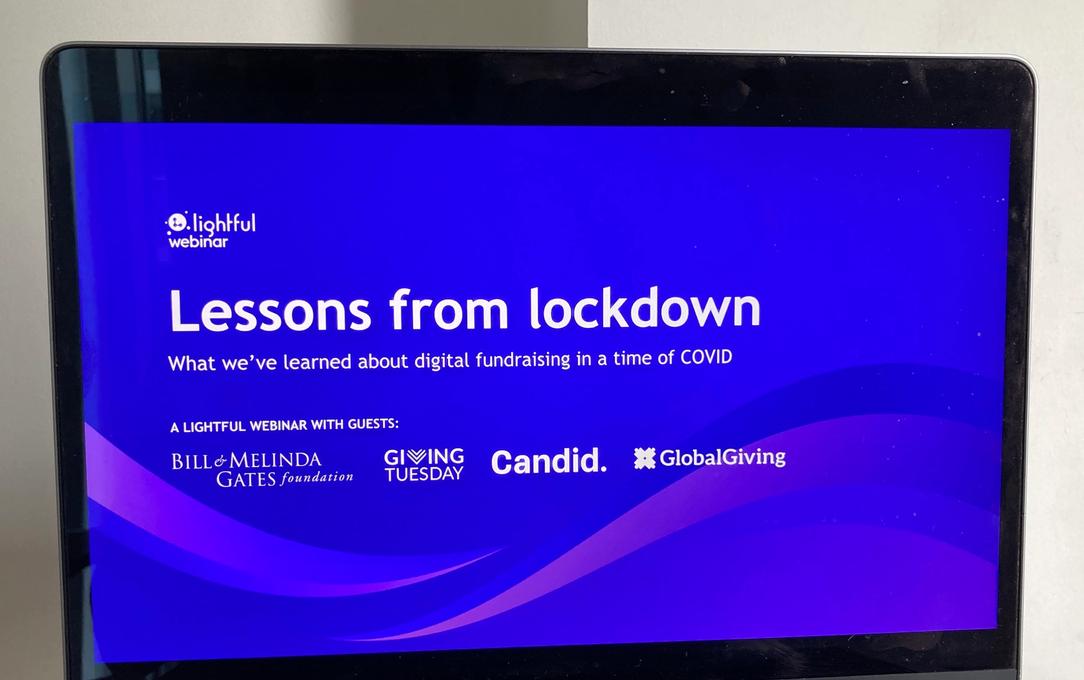How to use social media for major gifts fundraising: Identification and cultivation (part 1)

Individual giving and campaign teams in non-profits and social enterprises have become more and more adept at using social media, but often overlook, or don’t systematise, the role that it can play for major gifts fundraising.
For gifts of a certain size, social media won’t be able to replace the level of individual engagement needed. However, it can provide important insights and small wins in prospect research and the early stages of securing major gifts for your organisation and complement your efforts.
Incorporating a social media strategy as part of your major gifts fundraising can help you build better relationships with High Net Worth Individuals, and lead to more donations and a greater social impact for your cause.
At Lightful, we strongly believe that technology plays a key role in transforming the sector. In our two-part series, we take a look at ways in which social media can be used for major gifts fundraising, starting with using organic and paid tactics to identify and cultivate prospects.
Identification on LinkedIn
When prospecting for major gifts donors, always come prepared. Using LinkedIn to build a full picture of a prospect can be invaluable – background on their business, any mutual contacts in your networks that might be able to introduce you can help cultivate a warm relationship, especially for higher education and membership organisations. In the UK alone there are 1.8 million High Net Worth Individuals (HNWIs), and over 300,000 ‘affluent millennials’ on the platform.
Users of the platform are also 44.4% more likely to donate to a charity, and most likely, the people who work with and for major donor prospects will also have a presence there. By joining the right groups (especially around philanthropy, social impact, and charities) you can find and engage with potential major donors too.
Syncing your calendar with LinkedIn’s mobile app for tailored briefings on upcoming meetings, and adding tools like Rapportive to your email client for pop-up summaries on contacts is a great way of getting more of a holistic view of your prospect online – just remember to turn on ‘Private mode’ when viewing profiles of donors if you don’t want them to know you’re researching them.
Identification on Facebook
Did you know that Facebook’s Ad Manager allows you to target by demographic and behaviour?
A tailored supporter journey for HNWIs starts with the right story and ask from day one. It is possible to create an audience of HNWIs, who have demonstrated interest in supporting charities in your area, to reach via Facebook Ads or boosted posts.
Facebook can be a great way of driving awareness amongst local major donor prospects, as the ability to secure a major gift on the platform directly is extremely rare – the key here is getting your organisation at the front of their mind. Lead Ad campaigns work well in this scenario, as in one click they submit their interest in learning more about your cause in exchange for their email address. This is a great way to build your prospect list to cultivate via your major donor email nurture campaigns.
Keep an eye on the cost per lead for this channel, with a good story telling advertising campaign to a well targeted audience, cost per lead can be as low as £10 – £30. Considering the average cost of acquisition of a new donor, let alone major donor runs at over £150, Facebook advertising offers great value for money.
This is especially true for higher education and membership organisations – it’s a great way to make a short list of people to pick up the phone to, or invite to an event. For more detailed case studies of this strategy see ABF – Big Curry, and Gua Africa – Sponsor a Child Soldier.
Cultivation
Building rapport with your prospective donors goes beyond their career history – and this is where more personal social media like Twitter and Facebook can come into play. According to Social Media London, 70% of HNWIs in the UK use social media, and users tend to prioritise ‘personal’ rather than ‘professional’ use on Facebook and Twitter. Users on these platforms will be sharing updates about their life, connect with friends and promote causes or products they care about.
Once you’ve identified prospects, you can then begin to use social media to cultivate them across different channels. You can do this organically by using listening feeds – you can keep track of relevant conversations, and influencers, and take part in conversations that matter. You should also consider advertising and tailor your content to appeal to HNWIs, using LinkedIn and Facebook advertising to target specific job titles and levels of experience.
By using promoted posts to target potential High Net Worth Individuals on Facebook, you can raise awareness of your cause, content or event before making a cold approach organically. Spinning a narrative over time and over a series of promoted posts followed by a lead ad, is the most powerful way of attracting new supporters of any level. Think of your campaigns as unravelling a story for the new audience you are targeting. Set the issue your cause addresses for the first week, the projects you offer to address this the second, highlight beneficiary stories the third, and impact the fourth. Inviting your audience with a call to action to join your major donor email list after taking them on this journey is much more likely to be successful than going straight in with a Lead Ad.
Lead Campaigns allow Facebook users to register their interest in your, email list, Annual Benefit or summer ball in one click, auto-populating their email for you from Facebook’s own data and greatly reducing friction for the user. Considering the cost of a click on Facebook, and the cost of a lead that can be achieved, the ROI of major gift fundraising on social media could be very impressive.
It can complement your other fundraising activities as well – after all, the focus should be around building relationships. Public personal posts can provide conversation topics – being able to open a call or a meeting by congratulating them on their sport team’s win, for example, adds a great personal touch, and sharing your interest in their comments on current affairs can help you find common ground. Depending on the tone of voice of your organisation, you can always reply directly to tweets with a friendly comment to warm the relationship if one already exists.
Remember to keep engagement light – don’t alienate your prospects with your overfamiliarity.
Find out more about how you can target Facebook ads by checking out our guides in the Lightful Community! Sign up today.
Anna Rickman
@AnnaTessRickman
and Erin Niimi Longhurst
@ErinNiimi
Latest articles

In a world of growing uncertainty, small and local non-profit organisations often find themselves with competing priorities and struggle to plan how to allocate their available resources. Despite the increasing demand for their vital work, they are not always able to allocate the funds they receive to strategic planning and future growth.

As the world becomes more digitally-focused, it’s essential for nonprofits to have a digital presence. With more and more options for online engagement, we know that this can be challenging for nonprofits to tackle. But, we also know that it is a huge opportunity to increase audience engagement, awareness and fundraising. To help nonprofits navigate this, we’re going to explore the “whys” and “hows” of creating a nonprofit digital strategy. We’re even providing a free digital strategy canvas to help nonprofits improve their online presence in just a few steps.
Related posts

One of the primary goals of Lightful's BRIDGE programme is to help small and grassroots nonprofits raise more funds through digital channels. Thanks to the tools and support we provide, participants' confidence in their digital skills grows dramatically. We also help them practice their new-found skills by running campaigns around key milestones, like Giving Tuesday, which provide real-world opportunities to test, learn and improve further.

Last week we’ve hosted a webinar with a very interesting panel sharing their key lessons learned about digital fundraising during lockdown.
See who we help
Contact us
Want to learn more?
Email Jonathan and start a conversation





